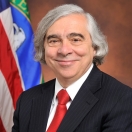
This blog is cross-posted from Energy.gov.

This week, I’m in San Francisco to host the first gathering of global energy ministers since last December’s climate negotiations in Paris. These leaders represent countries that make up 75 percent of global greenhouse gas emissions. The focus of these meetings will be to expand international collaboration in clean energy research, development, demonstration and deployment to combat climate change, drive economic growth, and help ensure energy security.
In San Francisco, energy leaders will participate in the 7th Clean Energy Ministerial (CEM7), an alliance of countries that are global leaders in clean energy. It’s also the inaugural Mission Innovation Ministerial, a separate but largely overlapping group of countries that has committed to double support for clean energy research and development.
In addition, the week will feature a variety of other clean energy-focused events including the Clean Energy Education & Empowerment’s (C3E) Women in Clean Energy Symposium and the CEM Startups and Solutions Technology Showcase in San Francisco's Union Square.
The Clean Energy Ministerial is an alliance of 23 major countries and the European Commission that are working together to accelerate clean energy deployment. Their collaborations are already producing innovative local and national clean energy policies, ambitious emissions reductions, efficiency programs and technology collaboration.
For example, South Korea, South Africa, Chile and India have either adopted or proposed 16 efficiency standards and policies to make appliances such as water heaters, televisions and ceiling fans more energy-efficient through CEM’s Super-Efficient Equipment and Appliance Deployment initiative.
As a result, India became the first country in the world to set comprehensive quality and performance standards for LEDs, aided by technical expertise in the United States. India then used those standards to initiate a bulk purchase program for hundreds of millions of LEDs at a remarkably low cost.
Another example of the CEM’s collaborative structure is the Clean Energy Solutions Center, which helps policymakers implement and design policies and programs. The Solutions Center has already provided no-cost clean energy policy support to over 90 countries and it is developing a new capability to help identify financing strategies. The Center is expanding to include a Finance Portal.
While CEM is pushing deployment of today’s clean-energy technologies, energy ministers and business leaders are also meeting for the inaugural Mission Innovation Ministerial, focused on developing the cutting edge clean energy solutions of tomorrow.
During the first day of the Paris climate negotiations last year, President Obama joined 19 other world leaders to announce Mission Innovation, an effort to double investments in clean-energy-technology research and development by 2021. Supporting breakthroughs in clean energy will lower the costs of clean energy technologies and in turn help to combat climate change, enable life-changing energy services to the poor and enhance global energy security.
During the Mission Innovation Ministerial, ministers from these countries will announce specific action plans from their respective governments to achieve those goals.
We have to make sure that we have the world’s best and brightest working on these tough issues. That means making full use of women’s talents, yet the energy industry remains one of the global sectors with relatively little representation of women.
That’s why we started the Clean Energy Education & Empowerment Women in Clean Energy Symposium in 2011, with the goal of increasing the visibility of and encouraging more participation by women in clean energy. Since its inception, CEM countries have named 46 C3E Ambassadors and honored dozens of women around the world for their leadership in energy accelerators, education and deployment. On May 31, C3E will celebrate its fifth anniversary with a symposium at Stanford University.
It makes sense that the world’s energy leaders are gathering in California’s Bay Area. The state is a leader in progressive clean energy policies and deployment—while California’s Bay Area is a global hub of the clean-tech industry and venture capital. Plus, it is home to world-class universities, three of our DOE national labs, and some of the most innovative technology companies in the world. That makes California the perfect stage for global leaders to renew and advance their commitment to clean energy.


